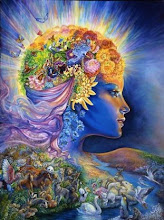
Sanders sense of loss goes beyond his individual experience; it expands to all dwellers of areas that have been or will be subject to change due to human agency and misjudgments which lead to the deterioration of the natural soundings. According to Buell, the nature of the toxic discourse has been modified by humans to produce a different version of it, a more modern one (45). This “modern nature” doesn’t meet the expectations of Sanders’ imagination and provokes feelings of loss and anger. It is true that Sanders’ return to his hometown was a painful experience; however, “his loss is mild compared to what others have lost” (13). It is here that the personal in Sanders’ piece becomes collective.
It is interesting to see how Buell’s formula of “toxicity” and “place” triggers Sanders’ environmental awareness. In a sense, the awareness of the place toxic discourse cannot be achieved without a strong bond with a place threatened by ecological threats. These threats are not necessarily toxic since according to Buell, “toxicity as such need not be the central issue; it could be any number of ecocultural concerns” (78). Sanders’ place-connectedness and its cultural significance function as a “galvanizing force” of environmental concern.

Buell stresses the idea that the environment is not separate from our physical existence as humans, but “part of our being” (55). This marriage between us, humans, and our surrounding is echoed in Hogan’s piece in which a thread from her skirt and her daughter’s hair are among the components of a bird’s nest that she found near her house. Hogan’s realization of “the remnants of [hers and her daughter’s] lives carried up the hill that way and turned into shelter” makes her feel one with nature (814). Although Hogan blurs the boundaries between human existence and nature, her sanctuary is a place in the wilderness “where a human hand has not been in everything” and “where a dream or life wouldn’t be invaded” (810). Ironically, she did what humans do best: she interfered. She took the nest out of its environment. This behavior might indicate the dominion of humans over the natural world; on the other hand, it might suggest that civilization and human interference are part of wilderness and continue to be felt within that place. What motivated her to save the mice and drown the ants? How do we justify our interference? Is that what Garrard and Buell refer to as “second nature”/ “modified nature/ “modern nature”? Hogan’s detailed description of her natural surroundings, her understanding of nature, and her acknowledgement of the cycle of life and death remind us that humans are part of the earth and therefore humans are not only affected, but also affect the ecosystem, a notion Garrard stresses all throughout his book.

In “Preserving Wilderness,” Berry chooses not to support the nature-culture dichotomy, but urges us to lead a life that cerebrate the harmonious relationship between nature and culture. In a sense, he rejects the dominance of humans over the natural world, calling for a “space” in which “the only thing we have to preserve nature with is culture; the only thing we have to preserve wildness with is domesticity” (522). Garrard’s definition of ecocriticism emphasizes “the complex negotiations of nature and culture,” and just like Berry, stresses the reliance of these two elements on each other for continuity and survival (4). But how is this reconciliation possible? Berry discusses the importance of the inseparability of the spiritual and the practical (524). By emphasizing the importance of changing the economy to preserve the wildernesses, Berry’s appeal corresponds to the consensus that “[a] healthy environment is necessary for a healthy economy” (Buell 34). After all, there is a depth of meaning in finding the interaction of the practical culture and the spiritual nature.
In his piece, Berry describes his places through a historical lens that unfolds the destruction of previous generations and communities and surfaces the suffering of the people. For him and for Buell, “places have histories” and they are constantly changing (Buell 67). Furthermore, in stating that “the worst disease of the world now is probably the ideology of technological heroism,” (528) Berry voices Buell’s anxiety that arises from the “chemical” and the destruction brought by human agency (Buell 31). When such an ideology is adopted by the industrial middle-class it causes destruction in the environment since the priority of this class is to ensure “success of their careers.” This ideology causes many communities to be destroyed through acts of exploitation and negligence.

I just want to interject briefly that Hogan picks up an abandoned nest, so is not interfering. I can understand why she drowned the ants to save the mice. I like how you connect that to modified nature. She confers a sense of these nests and dwellings as temporary; their structure is dependent on life being in them. They are also both real and imaginary.
ReplyDeleteGreat interweaving of Buell and Sanders. You allow them to complement each other well in your post (and Buell and Hogan, and Buell and Berry also). I am excited to see where and how the term "Modern Nature" crops up as the discussion goes on. How does "modern nature," as the only nature we have and/or can even imagine, affect our treatment of it?
ReplyDeleteHumans affect places, as does nature, but the fundamental question in all these texts we've read (whether explicit or implicit) is how can humans affect places with a sense of collective ownership? How do interact emphatically with spaces and places?
ReplyDeleteI like how you attach Hogan to this idea. Cool post too.